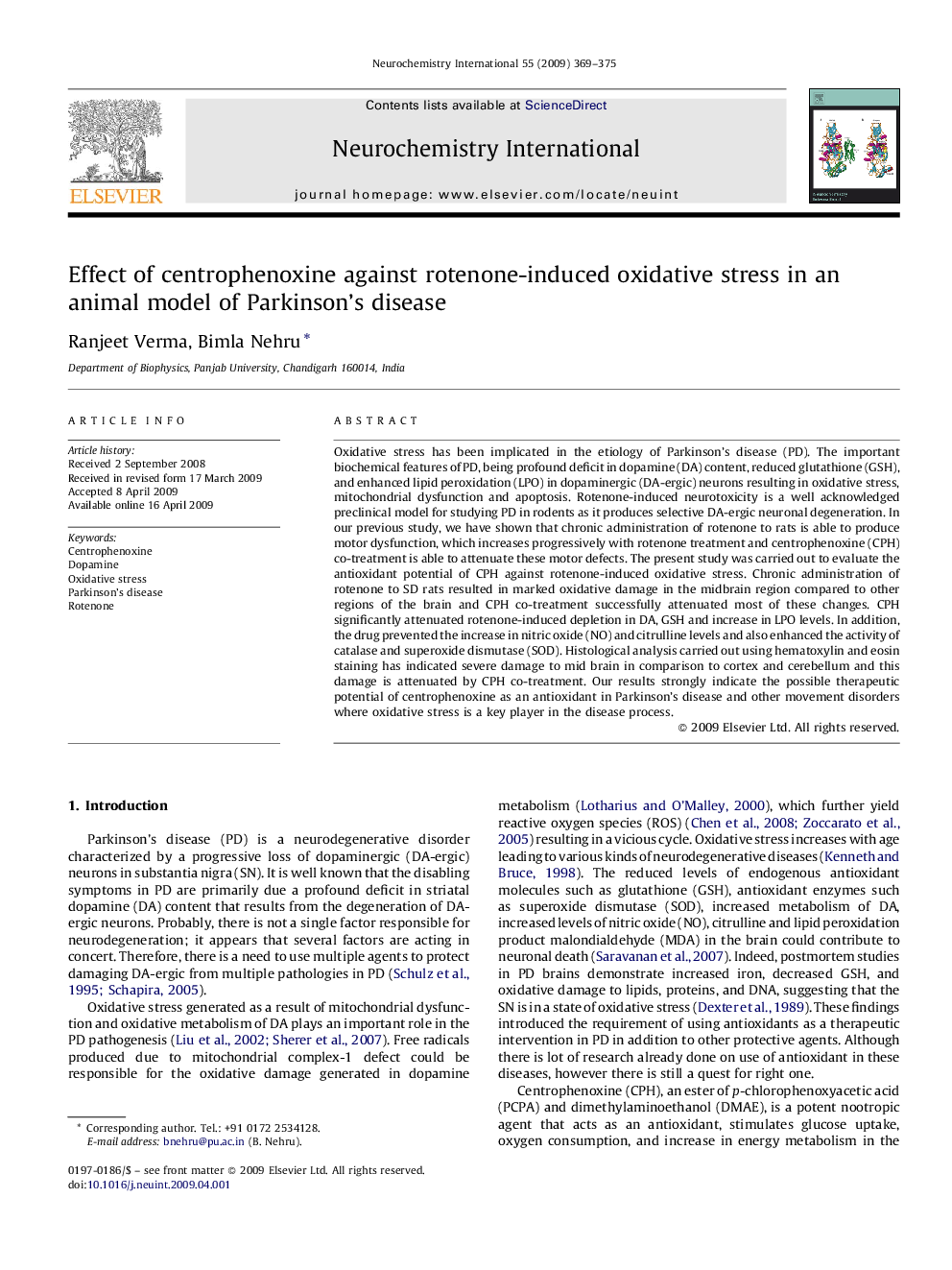| Article ID | Journal | Published Year | Pages | File Type |
|---|---|---|---|---|
| 2201655 | Neurochemistry International | 2009 | 7 Pages |
Oxidative stress has been implicated in the etiology of Parkinson's disease (PD). The important biochemical features of PD, being profound deficit in dopamine (DA) content, reduced glutathione (GSH), and enhanced lipid peroxidation (LPO) in dopaminergic (DA-ergic) neurons resulting in oxidative stress, mitochondrial dysfunction and apoptosis. Rotenone-induced neurotoxicity is a well acknowledged preclinical model for studying PD in rodents as it produces selective DA-ergic neuronal degeneration. In our previous study, we have shown that chronic administration of rotenone to rats is able to produce motor dysfunction, which increases progressively with rotenone treatment and centrophenoxine (CPH) co-treatment is able to attenuate these motor defects. The present study was carried out to evaluate the antioxidant potential of CPH against rotenone-induced oxidative stress. Chronic administration of rotenone to SD rats resulted in marked oxidative damage in the midbrain region compared to other regions of the brain and CPH co-treatment successfully attenuated most of these changes. CPH significantly attenuated rotenone-induced depletion in DA, GSH and increase in LPO levels. In addition, the drug prevented the increase in nitric oxide (NO) and citrulline levels and also enhanced the activity of catalase and superoxide dismutase (SOD). Histological analysis carried out using hematoxylin and eosin staining has indicated severe damage to mid brain in comparison to cortex and cerebellum and this damage is attenuated by CPH co-treatment. Our results strongly indicate the possible therapeutic potential of centrophenoxine as an antioxidant in Parkinson's disease and other movement disorders where oxidative stress is a key player in the disease process.
